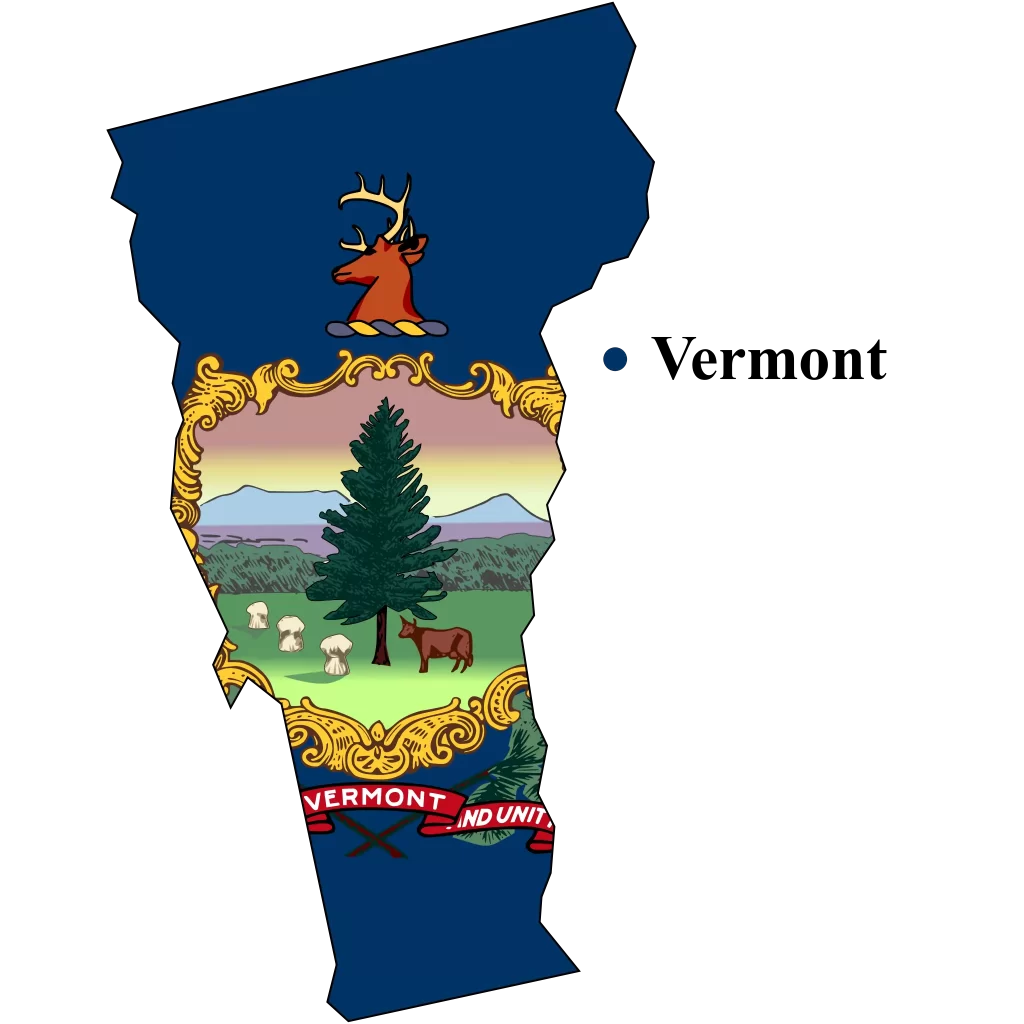Vermont

The judicial system serves as the pillar of justice and democracy. In the state of Vermont, this is no exception. The court system is designed to uphold the law, protect citizens’ rights, and maintain societal order. But what exactly does this look like in Vermont?
The Structure of Vermont’s Judiciary System
The courts in Vermont have a structure that’s unique and carefully designed to meet the needs of its citizens. There are three main tiers: the Supreme Court, the Superior Court, and the Probate Court.
Vermont Supreme Court
The Vermont Supreme Court is the highest court in the state. It hears appeals from all other courts and has the final say in state law interpretation. The court consists of a Chief Justice and four Associate Justices, all appointed by the Governor.
Vermont Superior Court
The Superior Court is the trial court in Vermont and it consists of four divisions: Civil, Criminal, Family, and Environmental.
Civil Division
The Civil Division handles non-criminal cases such as contract disputes, personal injury claims, and property disputes.
Criminal Division
The Criminal Division is where criminal cases, from minor offenses to serious felonies, are heard and decided.
Family Division
The Family Division deals with matters such as divorce, child custody, and domestic violence cases.
Environmental Division
The Environmental Division handles cases related to environmental law, such as land use and development.
Vermont Probate Court
Lastly, the Vermont Probate Court deals with matters such as wills, estates, trusts, and guardianships.
The Role and Function of the Courts
The courts in Vermont play a vital role in maintaining justice and order within the state.
The Process of Adjudication
The courts are responsible for adjudicating disputes and interpreting the law. They ensure that justice is served and that everyone gets a fair trial.
Protection of Rights and Freedoms
In addition, they protect the rights and freedoms of the citizens. They ensure that the constitution is upheld and that everyone’s rights are protected.
The People Behind Vermont’s Judiciary System
It’s important to recognize the people who make the system work: judges, lawyers, and court staff.
Judges
Judges are the decision-makers in the court. They interpret the law and ensure that justice is served.
Lawyers
Lawyers represent parties in a dispute. They advocate for their clients and ensure their legal rights are protected.
Court Staff
Court staff, including clerks and bailiffs, ensure the smooth running of the court. They play a critical role in the functioning of the judiciary system.
Challenges and Reforms in Vermont’s Judiciary System
As with any system, the Vermont Judiciary is not without its challenges. However, these challenges often pave the way for necessary reforms.
Access to Justice
Access to justice remains an ongoing issue. For many, legal representation is too costly, and navigating the court system can be complex. Efforts are ongoing to ensure that everyone, regardless of their income, has access to justice.
Modernization and Technological Reforms
The need for modernization is another challenge. Technology has transformed many sectors, and the judiciary is no exception. Vermont has been making strides to digitize court processes, improving both efficiency and accessibility.
Conclusion
In conclusion, the courts and judiciary system in Vermont play an integral role in maintaining justice and order. The structure, roles, and people behind this system are diverse and dedicated to ensuring fair and just outcomes. While challenges persist, Vermont’s judicial system continues to evolve and adapt to better serve its citizens.
FAQs
- What is the highest court in Vermont? The Vermont Supreme Court is the highest court in the state. It hears appeals from all other courts and has the final say on state law interpretation.
- How many divisions are there in the Vermont Superior Court? The Vermont Superior Court consists of four divisions: Civil, Criminal, Family, and Environmental.
- What types of cases does the Family Division handle? The Family Division deals with matters such as divorce, child custody, and domestic violence cases.
- What are some of the challenges facing Vermont’s judiciary system? Some challenges include ensuring access to justice for all citizens and modernizing the court system through technological reforms.
- Who makes up the Vermont judiciary system? The judiciary system is made up of judges, lawyers, and court staff, all playing essential roles in the functioning of the system.
Counties is Vermont
Addison | Bennington | Caledonia | Chittenden | Essex | Franklin | Grand Isle | Lamoille | Orange | Orleans | Rutland | Washington | Windham | Windsor
Federal courts:
Second Circuit Court of Appeals | U.S. District Court: District of Vermont | U.S. Bankruptcy Court: District of Vermont
State courts:
Vermont Supreme Court | Vermont Superior Courts | Vermont Probate Court | Vermont Judicial Bureau
State resources:
Courts in Vermont | Vermont judicial elections | Judicial selection in Vermont
Counties in Vermont
in
Counties
Here are all of the Counties in Vermont.
District Courts
District Courts
Detail of every District Court is here.
See Other Courts in US
Alabama | Alaska | Arizona | Arkansas | California | Colorado | Connecticut | Delaware | Florida | Georgia | Hawaii | Idaho | Illinois | Indiana | Iowa | Kansas | Kentucky | Louisiana | Maine | Maryland | Massachusetts | Michigan | Minnesota | Mississippi | Missouri | Montana | Nebraska | Nevada | New Hampshire | New Jersey | New Mexico | New York | North Carolina | North Dakota | Ohio | Oklahoma | Oregon | Pennsylvania | Rhode Island | South Carolina | South Dakota | Tennessee | Texas | Utah | Vermont | Virginia | Washington | West Virginia | Wisconsin | Wyoming
